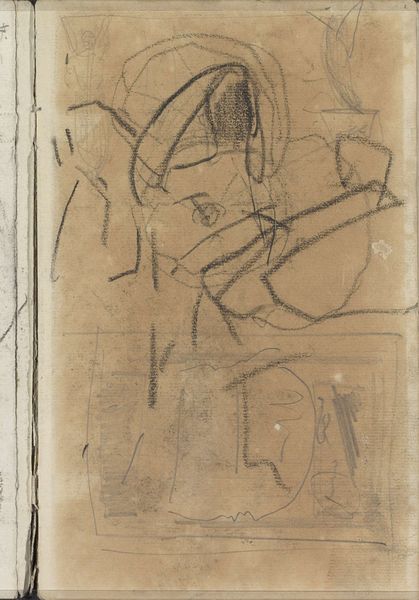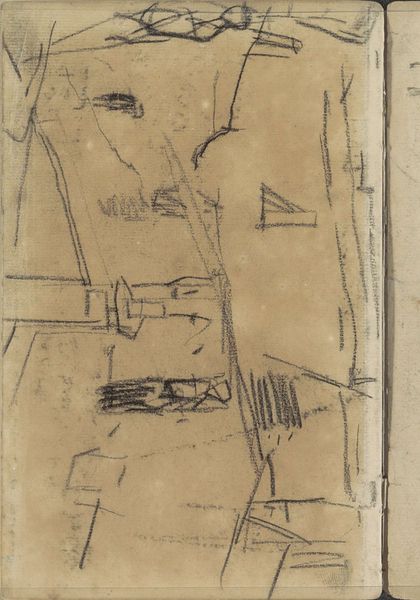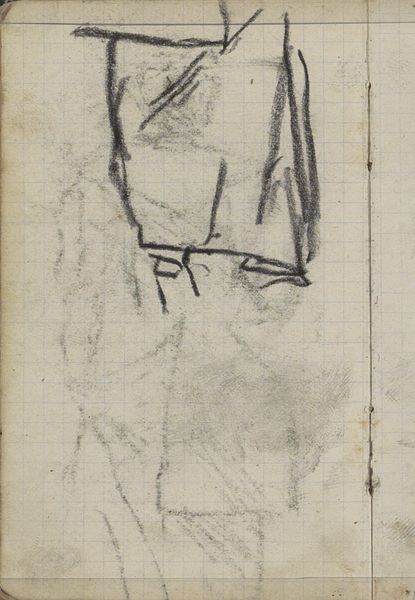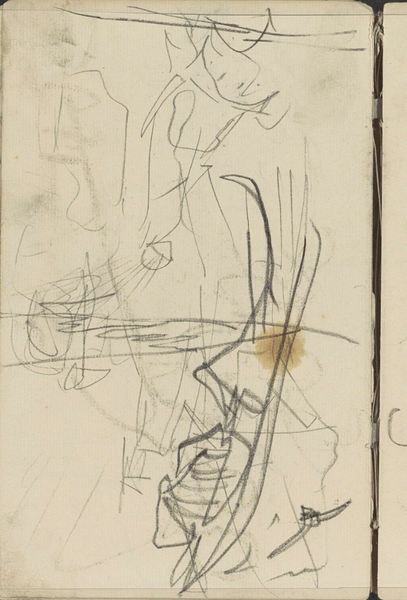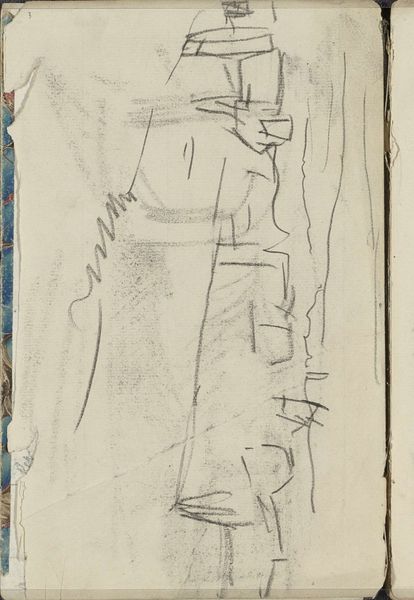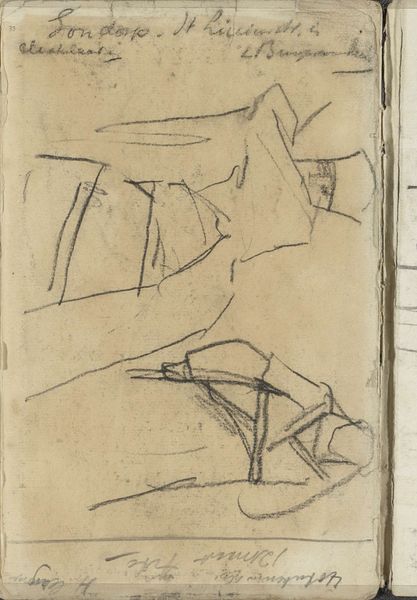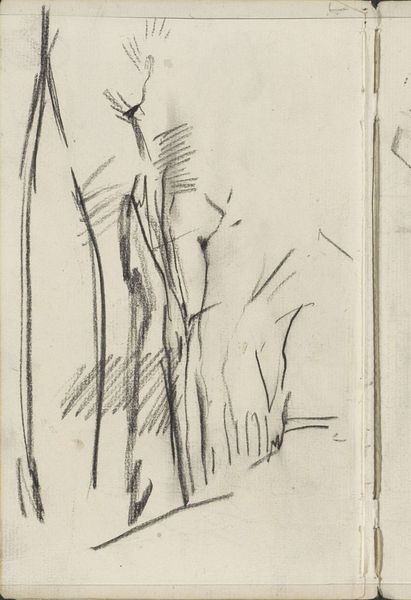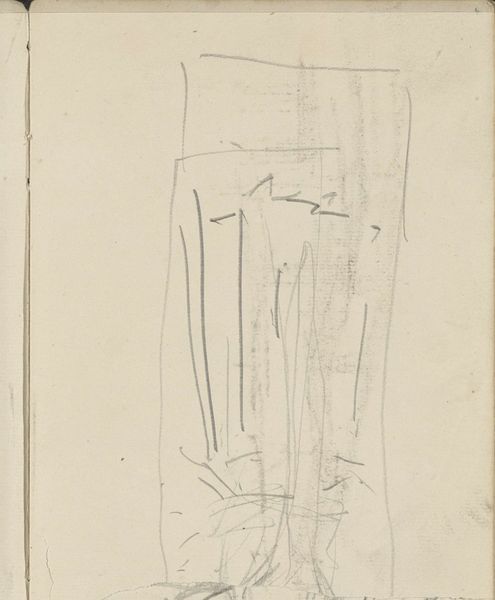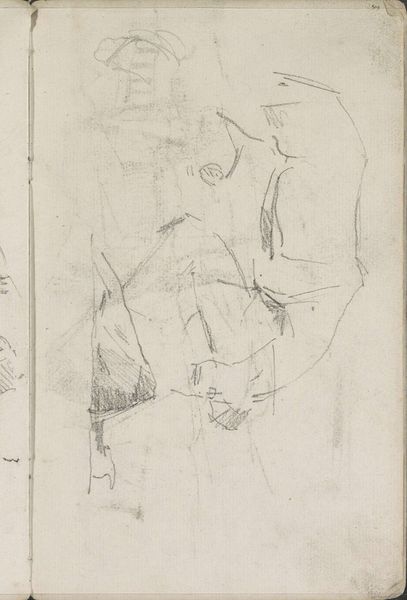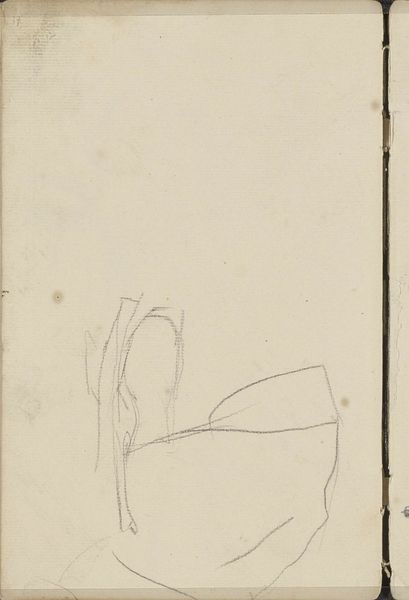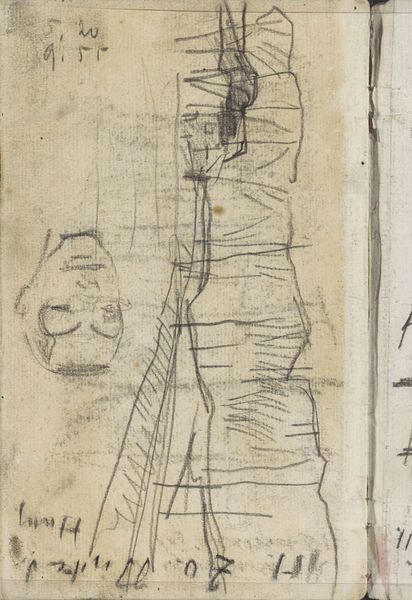
Portret van de actrice Theo Mann-Bouwmeester als Francillon 1887
0:00
0:00
georgehendrikbreitner
Rijksmuseum
drawing, paper, pencil
#
portrait
#
drawing
#
amateur sketch
#
toned paper
#
light pencil work
#
impressionism
#
pencil sketch
#
incomplete sketchy
#
paper
#
personal sketchbook
#
detailed observational sketch
#
pencil
#
sketchbook drawing
#
sketchbook art
#
initial sketch
Copyright: Rijks Museum: Open Domain
Editor: This is a sketch by George Hendrik Breitner from 1887, titled "Portret van de actrice Theo Mann-Bouwmeester als Francillon", using pencil on paper. It’s very loose and preliminary, like a glimpse into the artist's process. What strikes you about this work? Curator: This isn't just a portrait, it's a document of labour. Consider the repetitive, almost frantic pencil strokes. Breitner isn't just capturing likeness, he's performing the act of seeing and representing, mediated by the tools at hand – the pencil, the paper, his own practiced hand. Look at the quick lines; it almost looks like he is marking how she’s posed, capturing each of her body positions. Editor: That makes sense. I was focused on the actress, but thinking about the labour… Were these sorts of sketches common practice, almost a form of artistic production line work for portraiture back then? Curator: Absolutely! Portraiture was a business. Think about the social context: burgeoning middle class, desiring representation, and the industrialization of art supplies. Breitner’s sketch points to that intersection, the tension between artistic vision and market demand. Were these quick sketches possibly the first draft of paintings sold to the upper class at the time? Editor: It’s fascinating to think about the materials themselves having a role, how readily available they became, feeding this demand for portraiture… I never considered it that way before. It’s more than just a likeness; it's a trace of a particular moment in the art world. Curator: Exactly. By shifting our focus to the material conditions and the labor involved, we can understand so much more about the artwork and its historical significance. The artwork serves almost as an instruction manual. Editor: So instead of focusing on *who* is portrayed, the real story here is *how* and *why* it was made. It really reframes how I see these pieces! Curator: Precisely! We are both walking away with a clearer image and insight to art production that occurred then.
Comments
No comments
Be the first to comment and join the conversation on the ultimate creative platform.
